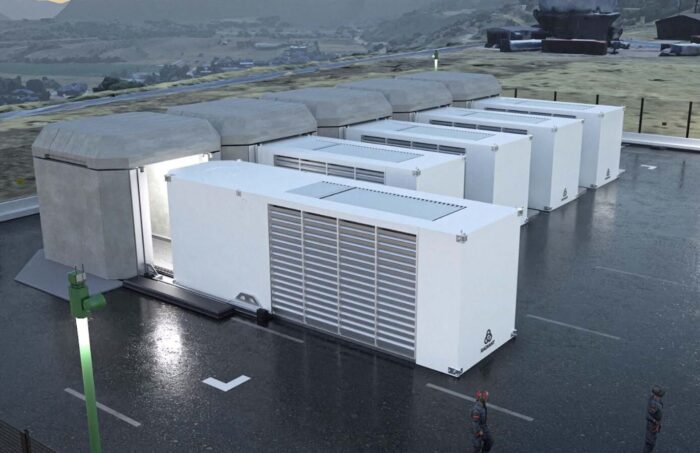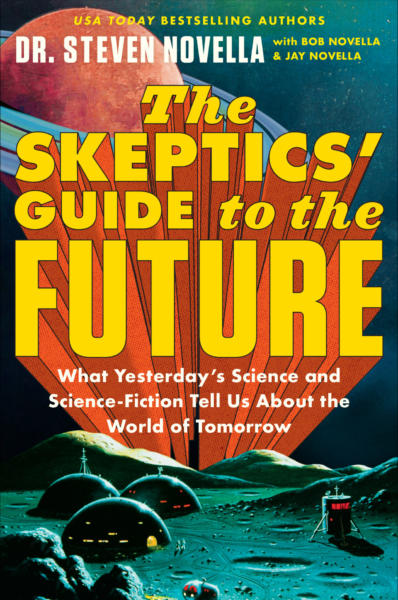Aug 11 2025
Mini-Nuclear Reactors
 I was sent this news item, Air Force To Use Wyoming-Made Portable Nuclear Reactors To Power Bases, with the comment that this plan is reckless because it puts nuclear reactors in war zones. I disagree, however. Let’s take a look at the details.
I was sent this news item, Air Force To Use Wyoming-Made Portable Nuclear Reactors To Power Bases, with the comment that this plan is reckless because it puts nuclear reactors in war zones. I disagree, however. Let’s take a look at the details.
The background is that a company in Wyoming is planning to build micro-nuclear reactors designed for use at US military bases. These reactor are self-contained, and should be able to be operated for about three years without refueling. When the fuel is exhausted, they are then returned to the company for disposal of the spent nuclear fuel and refueling. This is not a new idea, as these micro-reactors have been in development for some time. They are often similar to or adapted from the types of reactors found on nuclear submarines or other military vessels.
The idea is also the same – there is an extreme tactical advantage to not needing refueling for several years. Nuclear subs can roam around the Earth without needing a constant supply of fossil fuel. US military bases generally get their power from civilian energy grids. They also have diesel generators for backup power. Forward bases in other countries often rely entirely on diesel generators, which means they need daily deliveries of diesel fuel to keep going. A micro-nuclear reactor would eliminate the need for such deliveries. The cited article claims that 20% of recent military casualties occurs when fuel convoys get targeted and attacked.
Even at home, there is concern that the civilian grid is vulnerable to cyberattack. If, during an attack, it was possible to take out the energy of US military bases, that is an obvious vulnerability. So having onsite independent energy production is beneficial.
What about the safety concerns? On US soil, and even with our bases in friendly countries, like Germany, this would be no more of an issue than any nuclear power plant. In fact, it would be much less. What’s better than having a military base protecting your nuclear facility 24/7? The only real issue is with forward deployed bases in potentially hostile locations, even “war zones”. Here the article simply says that the details of security have not been released. This, of course, is a tiny percentage of all US military bases, so it’s possible they may simply not deploy the reactors unless they can guarantee they are safe. But, forward deployed bases are the ones that would arguably benefit most from them. So, one solution would be simply to have these nuclear micro reactors be highly protected. They can be placed in hardened bunkers at the centers of military bases with extreme security. Doesn’t seem like an unsolvable problem.
I would also point out that the navy has used forward deployed nuclear reactors in war zones for decades without issue.
What I like best about this option is the potential to reduce greenhouse gas emissions. The US military is estimated to be responsible for 1% of total US carbon emissions. This can vary tremendously, however, and would obviously spike during active conflict. Getting military bases off the civilian grid and replacing their power with nuclear also will help move us in the direction of net zero carbon emissions.
You may have also read about NASA being directed to build a nuclear reactors on the moon. This also would need to be a self-contained and automatically operating micro reactor. If we are planning any long term presence on the moon, this is a great idea. It is impractical to deliver lots of fuel to the moon. Solar only works at the poles – everywhere else would see half a month of no sun. You would need to pair solar with lots of battery storage (enough to run everything for two weeks at a time). Also, solar panels would be vulnerable to micrometeors. Obviously there is no wind or hydro power on the moon. There is also no geothermal – not without deep drilling that would also not be practical. So what’s left? Nuclear.
A micro reactor could be designed to last 20 years without refueling. Solar and batteries can augment the power and be a backup. But nothing would provide the reliable steady power in large amounts that nuclear could.
This also means that nuclear power is the most reliable source of energy pretty much anywhere in the solar system other than Earth or in space near Earth. Solar power works on Mars for limited use, but Mars has only 50% the light intensity of Earth. Frequent storms also bury panels, which would need to be constantly cleaned. Jupiter has only 4% the light intensity. So solar power becomes less and less efficient as you get farther from the sun. Some locations may have hydrogen that can be harvested, but then you also need oxygen to burn it for energy.
So not only for uses on Earth, but also in space, it makes sense to develop micro nuclear technology.






